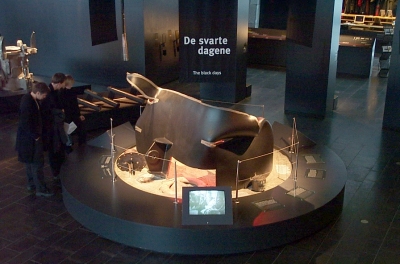1. The Commission is well prepared and the hearings are being conducted in an effective manner. I like the concept of establishing independent commissions of inquiry to investigate major accidents like Montara. If this incident had happened in the US, the Coast Guard and MMS would investigate (probably jointly). The investigators would be technically competent and very thorough. However, because these agencies regulate the operations they are investigating, there would be concerns about the independence of the panel and the report. (The President could, of course, establish an independent review panel, and this would be a distinct possibility for an event like this. Congress would no doubt conduct high-profile hearings, but not for the purpose of better understanding the causes of the accident.)
2. The timely posting of testimony is greatly appreciated. Most investigation panels are not so transparent and accommodating. However, the recent submissions from witnesses and other parties (alluded to in the testimony) have not yet been posted on the website. This information would help us better follow the hearings.
3. The root-cause cementing issues should be studied internationally. There is room for improvement in cementing technology, practices, and standards.
4. The planning for a challenging cement job in a horizontal section of the well was surprisingly limited, and seem to have been conducted in isolated compartments. One doesn’t get the sense that there was a coordinated plan for conducting this work; nor was there evidence of contingencies should problems arise.
5. One aspect of the 9 5/8″ cementing job that merits further discussion is the timing of the casing pressure test. Much attention has been given to the decision to reinject fluids/cement after the influx that followed the pressure integrity test of the casing. However, little attention has been given to the timing of that pressure test. Had the casing pressure test not been conducted until after the cement had set, it seems possible (likely?) that fluid would not have been forced into the shoe beneath the faulty float valve and no channels would have been created in that shoe. The subsequent reinjection of fluids, which everyone seems to agree exacerbated the problem, would not have occurred and a satisfactory barrier would have been present at the base of the casing. Should the timing of casing pressure tests be addressed in an industry standard? Do we need a standard covering remedial actions in the event of shoe integrity issues?
6. It has been said that offshore supervisors spend too much time reporting to various onshore offices and not enough time overseeing operations at the facility. Does the offshore workplace suffer from too many reports and too little meaningful communication? Is the senior offshore supervisor a facility manager or simply a conduit for information? Is responsibility and accountability among operator and contractor personnel clearly established?
7. The operator-contractor relationship is always a sensitive topic. A good operator should not want contractors who simply execute their directives any more than a manager should want staff who only nod in agreement. How does a company manage their operations to ensure that they are receiving the best technical input from their contractors?
8. When your operating manual calls for cement or mechanical plugs in suspended wells, how do you substitute corrosion caps without a comprehensive review of the risks? Did PTTEP plan to pressure test the 9 5/8″ cap (didn’t happen)? Are such tests feasible and safe? Can you safely and effectively measure pressure under a sea floor corrosion cap? Was the intent to remove the cap with BOPE in place (that’s not the way it was done)? The use of pressure containing corrosion caps should be fully discussed in the aftermath of Montara? Is a standard needed?
Read Full Post »


